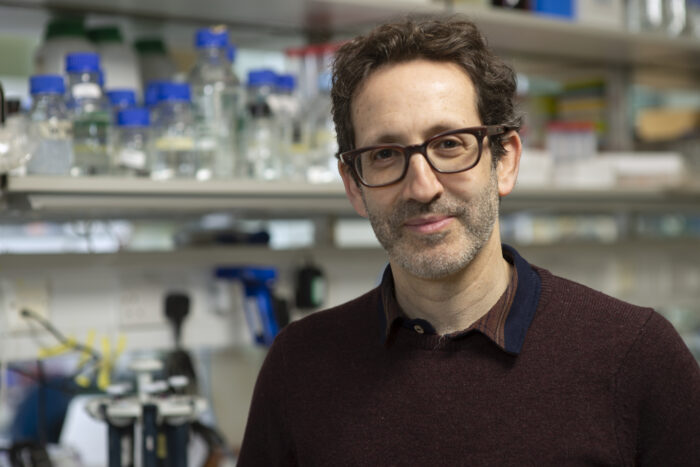
The LMB is delighted to announce Buzz Baum as a new Group Leader in the Cell Biology Division, where his group will continue their research into the evolution of cell division.
Cell division, the process when one cell becomes two, is one of the most fundamental of all biological processes. While Buzz’s team has long studied cell division in eukaryotes, the realisation that many of the core machines involved in cell division have been conserved over billions of years recently led his team to begin studying cell division in our archaeal relatives.
While at UCL’s MRC Laboratory for Molecular Cell Biology (LMCB), Buzz’s group developed a system for live imaging of cell division in the archaeon Sulfolobus, a microorganism that grows at very high temperatures and in strongly acidic environments inside volcanic springs. Buzz’s group now aims to identify the most deeply conserved processes of cell division through comparisons in Sulfolobus, yeast, Drosophila, and human cells. As eukaryotic cells are thought to have arisen from the symbiosis of an archaeal cell and a bacterial cell, this work is also expected to improve our understanding of how this partnership developed.
Following his first degree in Biochemistry at the University of Oxford, Buzz obtained his PhD studying the cell division cycle with Paul Nurse at the CRUK London Research Institute. Buzz first started studying cell shape in Drosophila as a postdoctoral researcher with Norbert Perrimon at Harvard Medical School. Since then, Buzz has led his own group studying cell shape changes through the cell cycle at UCL’s Ludwig Institute for Cancer Research, at UCL’s MRC LMCB, and as a satellite group leader at the Francis Crick Institute. Buzz was made an EMBO Young Investigator in 2004 and elected to Membership of EMBO in 2013.
‘We are thrilled to be joining the LMB. I am especially looking forward to cycling to work to the sound of skylarks, chatting to my brilliant new colleagues, and exploring the fundamentals of cell biology. I cannot imagine a better home for our research.’